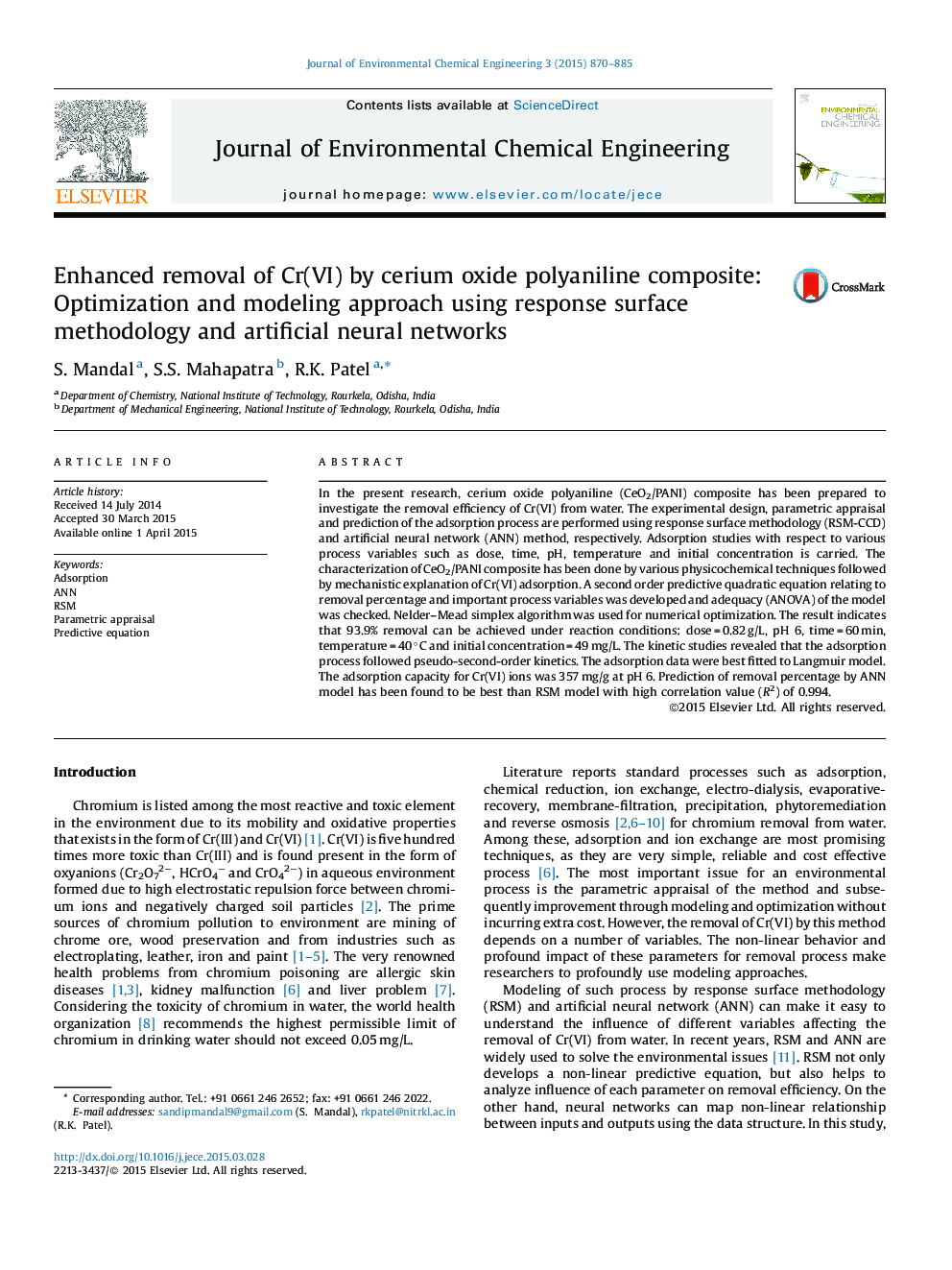| Article ID | Journal | Published Year | Pages | File Type |
|---|---|---|---|---|
| 222310 | Journal of Environmental Chemical Engineering | 2015 | 16 Pages |
•A cost effective adsorbent is proposed for Cr(VI) removal from water.•Removal efficiency of the adsorbent is studied over a wide range of pH (2–10).•The removal of hexavalent chromium is 93.9% at obtained optimum condition.•The adsorption capacity for Cr(VI) ions was 357 mg/g at pH 6.•Prediction of removal percentage by ANN was found to be best than RSM model.
In the present research, cerium oxide polyaniline (CeO2/PANI) composite has been prepared to investigate the removal efficiency of Cr(VI) from water. The experimental design, parametric appraisal and prediction of the adsorption process are performed using response surface methodology (RSM-CCD) and artificial neural network (ANN) method, respectively. Adsorption studies with respect to various process variables such as dose, time, pH, temperature and initial concentration is carried. The characterization of CeO2/PANI composite has been done by various physicochemical techniques followed by mechanistic explanation of Cr(VI) adsorption. A second order predictive quadratic equation relating to removal percentage and important process variables was developed and adequacy (ANOVA) of the model was checked. Nelder–Mead simplex algorithm was used for numerical optimization. The result indicates that 93.9% removal can be achieved under reaction conditions: dose = 0.82 g/L, pH 6, time = 60 min, temperature = 40 °C and initial concentration = 49 mg/L. The kinetic studies revealed that the adsorption process followed pseudo-second-order kinetics. The adsorption data were best fitted to Langmuir model. The adsorption capacity for Cr(VI) ions was 357 mg/g at pH 6. Prediction of removal percentage by ANN model has been found to be best than RSM model with high correlation value (R2) of 0.994.
